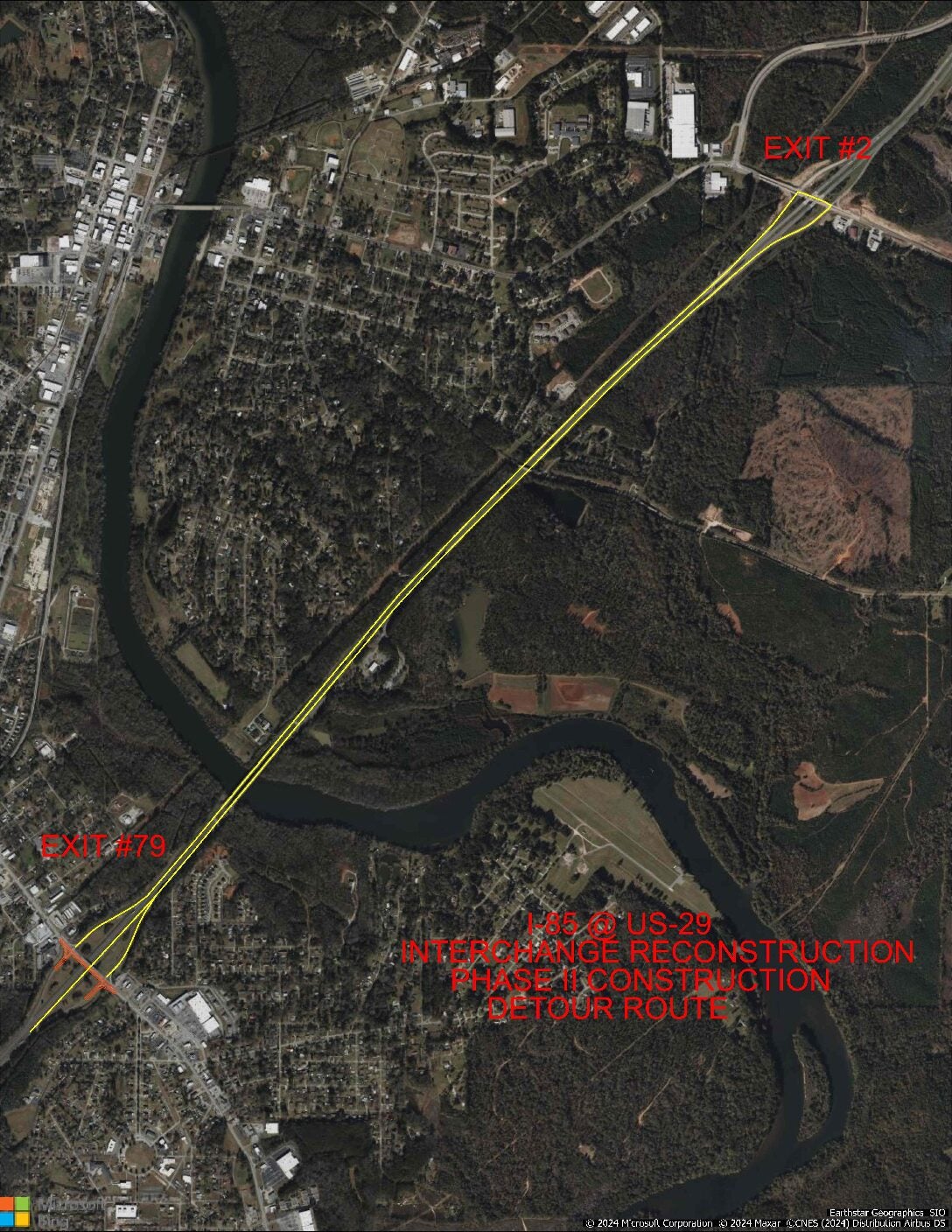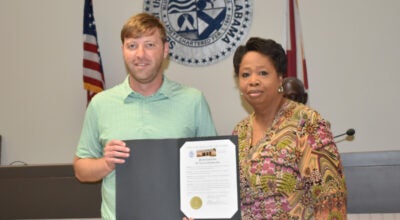No decision – yet, United States and CCSD defense rests their cases
Published 10:20 pm Friday, January 20, 2023
|
Getting your Trinity Audio player ready...
|
The United States and the defense rested its case Friday in the new school site hearing of the Chambers County School District. The wait begins as Judge W. Keith Watkins said he would allow the parties 60 days to file briefs before he rendered a verdict.
This will allow time for both the United States and the defense to review transcripts from the proceedings.For four days, US Attorneys and attorneys for the CCSD threw a barrage of questions at witnesses ranging from Superintendent Casey Chambley to school board members to geographical systems information experts — all trying to determine if the site selection process was completed fairly and all avenues were explored. The Chambers County School Board approved the Valley site in October by a vote of 4-2.
During Friday’s hearing, one of the members who voted no, district three representative LaShae Herring, said she thought the process was rushed.
During the board meeting on Oct. 26, Herring testified she suggested the board table the vote based on a letter submitted by the Desegregation Advisory Committee(DAC) recommending the board wait to vote. However, the board decided to proceed with the vote in a majority vote.
In follow-up, CCSD attorney Bob Meadows asked Herring why she voted after she voiced her objection. She could have abstained. Herring said she felt an abstained vote was the same as a no vote.
Watkins asked Herring if she thought there was a solution that will satisfy the majority of the county, no matter how he rules and to that she said, “I doubt it.”
LaFayette City Clerk Louis Davidson, who was observing the hearing from the Chambers County Courthouse, was called to the stand via Zoom to testify on the LaFayette site.
Davidson said the city has 52-acres of land it offered to the CCSD with additional privately owned land donated also available for the new school site.
Meadows asked Davidson how the city planned to finance the land.
Davidson said the decision is up to the mayor and council.
“As far as the property goes, that will be a mayor/council decision,” he said. “But if they opted to purchase the property, the city would not have to finance it. We have the funding. But of course that will be the decision of the mayor and council on how they would like to purchase the property.”
Although Davidson could not recall how many acres the city will need to purchase, Davidson confirmed the cost to the city is $5,000 per acre.
Meadows then asked Davidson about the current state of the police, fire and EMS and emergency departments in LaFayette and whether they were fully staffed, stating the reason for the question was to determine how equipped LaFayette is to handle any emergencies that might arise should the new high school be located within the city limits. Davidson told the court that both the police and fire departments were not at full staff and the nearest hospital was either in Opelika or Valley.
Davidson was unaware if the private parties who offered the property were willing to donate it to the city.
Day One Recap
BOE Attorney Bob Meadows presented trial and defendant exhibits and interviewed Superintendent Casey Chambley on the witness stand about data collection on city populations, geography, school district budget and donated property data.
Meadows outlined the school board’s process from the time he was hired in January 2021. In fall of 2022, Chambley confirmed the school board hired HOAR Property Management to gather data such as geodata to develop a plan to consolidate the high schools.
Chambley said one of the reasons that the additional sites were not considered was because of poor sewage or road accessibility. During cross-examination, US attorneys asked Chambley to confirm that the school board moved forward with the decision for the site selection without official data on the cost and timeframe of installing sewage systems. He said that the architect company, Cooper Carry, gave the school board estimates but not official information.
In April, HOAR Property Management held town hall meetings to inform the community and the board about their process and findings. During the summer of 2021, Chambley said CCSD established a community-wide task force with community leaders, parents and others. The group met and discussed desegregation obligations, facility assessments and data from November to February of 2021 and came up with several options for the different school grade levels — elementary, middle and high school.
On March 22, the BOE took the task force’s proposals into account and made a plan to close several elementary schools in the county and consolidate the high schools. In late May, a consent decree for these decisions was signed; however, the private plaintiffs pulled out of the order.
During cross-examination, Chambley confirmed that the Desegregation Advisory Committee’s input in the process was limited and requested for a more centralized location.
Day Two Recap
The second day of the hearing for the Chambers County School District in Montgomery began with the continuance of the cross-examination of Chambley.
There were roughly 25 people outside the Montgomery courthouse protesting the selected site. Around eight Lafayette citizens were present in Chambers County Courthouse on Wednesday, including Council Member Tony Thomas and Mayor Kenneth Vines.
Thomas said that LaFayette’s number one priority is the kids. Many of the plaintiff witnesses agreed that the location of the consolidated school should be centralized.
“LaFayette is the county seat, and that’s centralized,” Thomas said. “At the end of the day, it’s what’s best for the students.”
US Attorney Allison Scharfstein and Private plaintiff Attorney Stanley Gray questioned Chambley.
Gray asked the superintendent whether he obtained confirmed costs for renovations to the more centralized sites in the county before dismissing them. Chambley said construction company HOAR Property Management provided approximations.
Educational Facilities Planner Tracy Richter of HOAR Property Management made a site comparison matrix that was presented at a community meeting on Sept. 12. The Valley site portion had information related to geotechnical data, sewage accessibility and an environmental site assessment.
Gray asked Chambley if he knew that an environmental site assessment report expires after one year. The information for the Valley site was conducted by the city in 2016. The question was objected to and the judge sustained it.
Chambley also confirmed that he was in conversations with Valley Mayor Leonard Riley about a potential new school in Valley before the land was officially donated in July 2022.
After Chambley left the stand, the attorneys from the Legal Defense Fund called members of the Desegregation Advisory Committee, Alicia Perez-Purdue and several students, to be witnesses.
During the cross-examination, Perez-Purdue confirmed the DAC requested that the school board place the school in a centralized location and not temporarily bring the LaFayette students to Valley High School. According to her, the committee requested a meeting with the school board but were denied. Chambley said it was because the meeting was an executive session.
Kayla Ingles, a LaFayette student and member of the DAC, said that there were six students in the meeting, three from each school. No Valley students attended the meetings.
In his research, Richter found that there was an increase in Black residents and a decrease in White residents in the Valley area. According to him, only about 59 percent of both schools was being utilized. He said that he tried to find a reasonable utilization rather than wasting space and resources.
“There’s where your costs come into play,” Richter said.
The LaFayette site was added in early June. During July, the sites on Hwy 50 between LaFayette and Lanett were added.
In mid-August, Richter advised narrowing down the site selections. At this time, no extensive analysis was done on the sites off of Hwy 50, besides LaFayette and Valley. The sites off of Hwy 50 that were reviewed had to be over 50 acres. During cross-examination, Richter confirmed the cost, availability or transportation details of the Hwy 50, Fredonia and Cusseta sites.
The total miles traveled is less to the Valley site than the LaFayette site, according to Richter. However, there are also more students in general in Valley. Richter confirmed that the transportation burden would be larger on minorities in Valley than in LaFayette.
He said his advice came from the data of student proximity to the site and transportation mileage.
“I very clearly heard the concerns of LaFayette … Different points become different priorities at different times,” Richter said.
Day Three Recap
Day three of the hearing for the Chambers County School District in Montgomery focused primarily on transportation to the proposed site, Lee Hwang, president at Geographic Information Solutions, LLC, and Chambers County School District Director of Transportation Benji Mitchum.
In mid-August, Richter advised narrowing down the site selections. At this time, no extensive analysis was done on the sites off of Hwy 50 besides LaFayette and Valley. The sites off Hwy 50 that were reviewed had to be over 50 acres.
Hwang was charged with looking at distances between student residents and where the potential high school sites would be, along with identifying potential high school sites.
When asked, Hwang told US Attorney Allison Scharfstein he was not aware of the 1993 court order prior to being contracted by CCSD.
“You found out about the 1993 order in December 2022 after reading the expert’s report by the plaintiff’s party,” Scharfstein asked.
Hwang replied, “correct.”
Scharfstein continued for clarification, “But, prior to commencing your work, you did not read the 1993 order, and the district never talked with you about the 1993 order? So, you were never instructed to look for properties that were readily accessible to highway 50 between Lanett and LaFayette. But, you did talk to the district about looking for properties between LaFayette and Valley.”
The 1993 order said the Chambers County Board of Education would construct its new district-wide high school facility at a site readily accessible to Alabama state highway Route 50 between Lanett and LaFayette.
Hwang told Scharfstein there were discussions about looking for properties between LaFayette and Valley.
Hwang testified that in his analysis he was unable to map all of the high school students, largely due to addresses not being found. However, if a zip code was available, Hwang said he mapped those students to the center of the zip code so no student was left out of the analysis, creating total mile estimates by adding together the miles the individual students would travel to get to the proposed sites. Mileage, however, was not based on anyone physically driving the roads. Hwang said the analysis showed the shortest distance to the sites.
His conclusion using that data is that the total mileage will be higher if students had to travel to the LaFayette site than if they had to travel to the Valley site. However, Hwang said his conclusion did not take into account bus travel time, which should be considered, yet he did not have that data.
“You should consider the maximum time students spend on the bus, yes,” he told Scharfstein.
Based on the criteria provided, Hwang said he identified 14 parcels.
Scharfstein called into question Hwang’s mean, median analysis given that he testified that he he is not sure how the software calculates or identified or could not recall ever using this method in his previous work on site selection.





